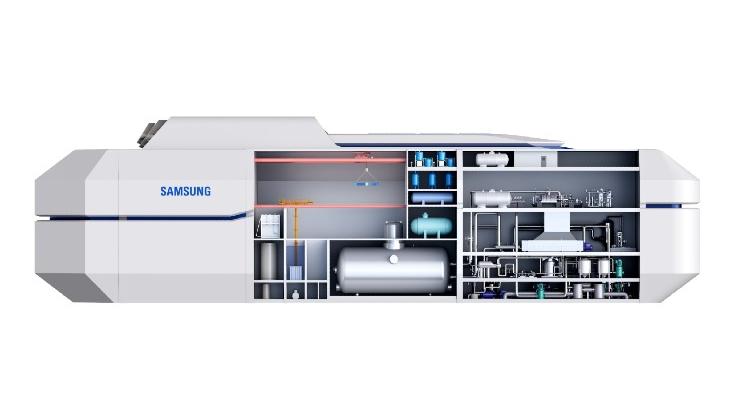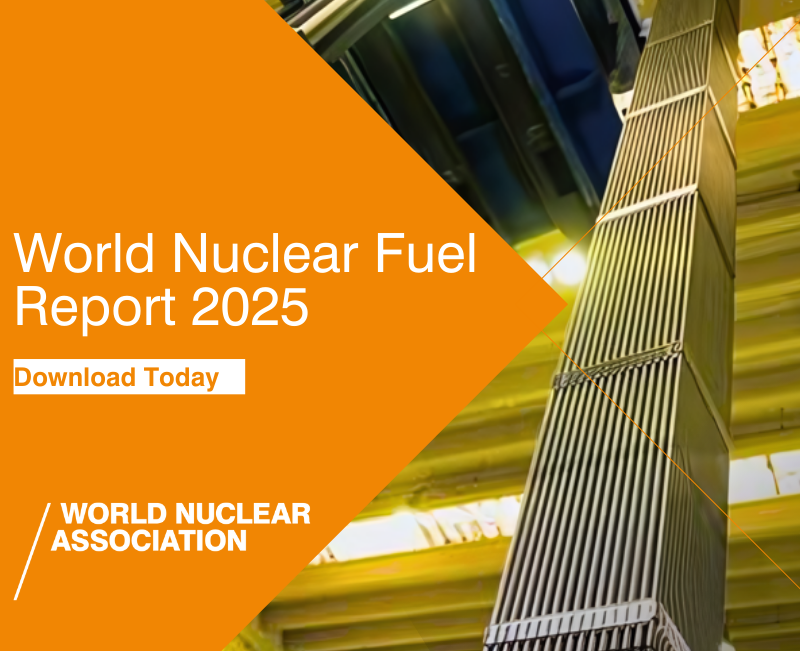The IAEA, posting on the social media site X, said their team at the site heard an explosion at around 01:50 local time coming from the New Safe Confinement (NSC) shelter, with photos showing flames from the apparent impact point towards the top of the structure.
They were told that the damage had been caused by a drone and added: "Fire safety personnel and vehicles responded within minutes. At this moment, there is no indication of a breach in the NSC’s inner containment. Radiation levels inside and outside remain normal and stable. No casualties reported. IAEA continues monitoring the situation."
IAEA Director General Rafael Mariano Grossi said the incident at Chernobyl and recent military activity in the Zaporizhzhia nuclear power plant area showed "there is no room for complacency, and the IAEA remains on high alert".
The two shelters covering the accident site
Chernobyl Nuclear Power Plant's unit 4 was destroyed in the April 1986 accident (you can read more about it in the World Nuclear Association's Chernobyl Accident information paper) with a shelter constructed in a matter of months to encase the damaged unit, which allowed the other units at the plant to continue operating. It still contains the molten core of the reactor and an estimated 200 tonnes of highly radioactive material.
However it was not designed for the very long-term, and so the New Safe Confinement - the largest moveable land-based structure ever built - was constructed to cover a much larger area including the original shelter. The New Safe Confinement has a span of 257 metres, a length of 162 metres, a height of 108 metres and a total weight of 36,000 tonnes and was designed for a lifetime of about 100 years. It was built nearby in two halves which were moved on specially constructed rail tracks to the current position, where it was completed in 2019.
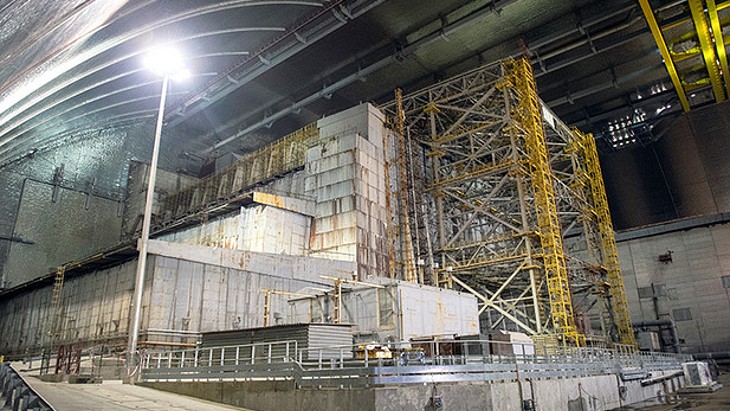
The original shelter is now within the New Safe Confinement (File Picture, Image: EBRD)
It has two layers of internal and external cladding around the main steel structure - about 12 metres apart - with the IAEA reference to the inner containment not being breached thought to refer to the inner section. The NSC was designed to allow for the eventual dismantling of the ageing makeshift shelter from 1986 and the management of radioactive waste. It is also designed to withstand temperatures ranging from -43°C to +45°C, a class-three tornado, and an earthquake with a magnitude of 6 on the Richter scale.
According to World Nuclear Association, the hermetically-sealed New Safe Confinement allows "engineers to remotely dismantle the 1986 structure that has shielded the remains of the reactor from the weather since the weeks after the accident. It will enable the eventual removal of the fuel-containing materials in the bottom of the reactor building and accommodate their characterisation, compaction, and packing for disposal. This task represents the most important step in eliminating nuclear hazard at the site - and the real start of dismantling".
What do we know about the damage to the shelter?
According to the operators of the Chernobyl Nuclear Power Plant (ChNPP) site, the arch-shaped New Safe Containment was struck at a height of 87 metres and "the impact occurred above the premises housing technological equipment that ensures the remote operation of the Confinement. As a result, both the external and internal cladding of the NSC Arch were damaged, along with equipment from the Main Cranes System. Additionally, local fire was detected on the external and internal cladding of the NSC Arch".
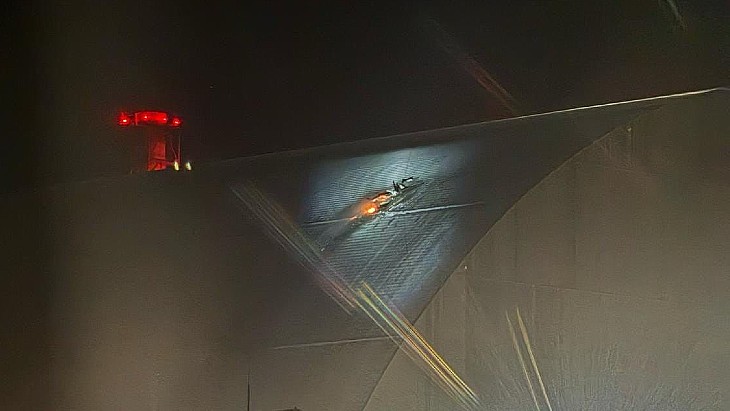
The damage to the outside (Image: IAEA/X)
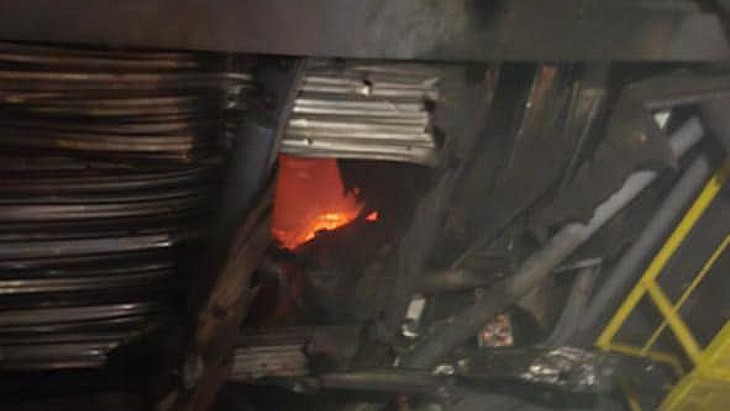
The damage from the inside (Image: ChNPP)
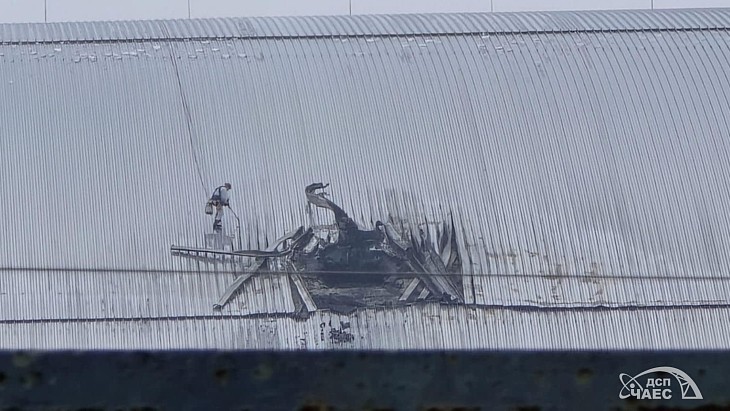
The damage being inspected during daylight (Image: ChNPP)
Firefighters put out the fire, with ChNPP saying that "due to the breach in the cladding, the conditions and limits of safe operation established by the Technological Operation Regulations of the NSC and Shelter Object have been violated".
They added that there were no casualties and no release of radioactive substances with radiation levels at their usual levels and "the situation is under control".
The wider context
Chernobyl nuclear power plant lies about 130 kilometres north of Ukraine's capital Kyiv, and about 20 kilometres south of Belarus. A 30-kilometre exclusion zone remains around the plant, although some areas have been progressively resettled. Three other reactors at the site, which was built during Soviet times, continued to operate after the accident, with unit 3 the last one operating, until December 2000.
When Russia launched its invasion of Ukraine in February 2022 it rapidly took control of the Chernobyl plant. Its forces remained there until withdrawing on 31 March 2022 and control returned to Ukrainian personnel. The IAEA has had experts stationed at the site as the war has continued, seeking to help ensure the safety and security of the site.
IAEA teams are also in place at Ukraine's three operating nuclear power plants and the Zaporizhzhia nuclear power plant, which has been under the control of Russian forces since early March 2022.
Ukraine has blamed Russia for the drone strike, while Russia denied it was responsible and blamed Ukraine. The IAEA has not attributed blame to either side during the war, with Director General Grossi explaining in a press conference at the United Nations in April last year that this was particularly the case with drones, saying "we are not commentators. We are not political speculators or analysts, we are an international agency of inspectors. And in order to say something like that, we must have proof, indisputable evidence, that an attack, or remnants of ammunition or any other weapon, is coming from a certain place. And in this case it is simply impossible".

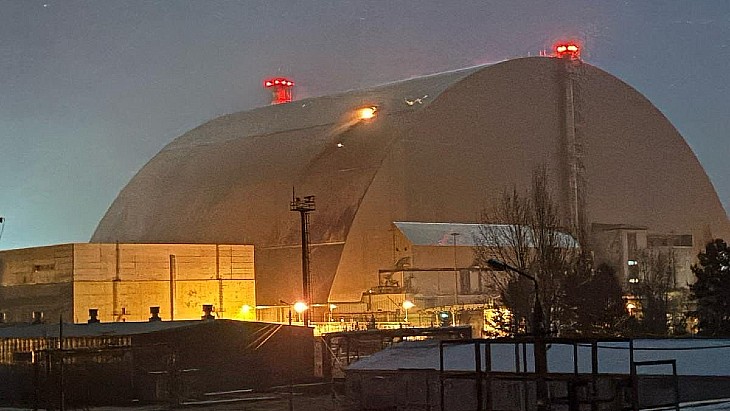



_47120.jpg)

_23621.jpg)
